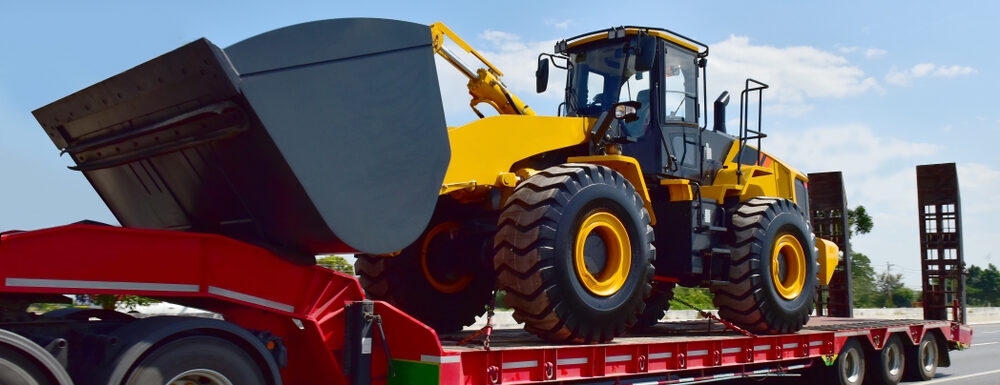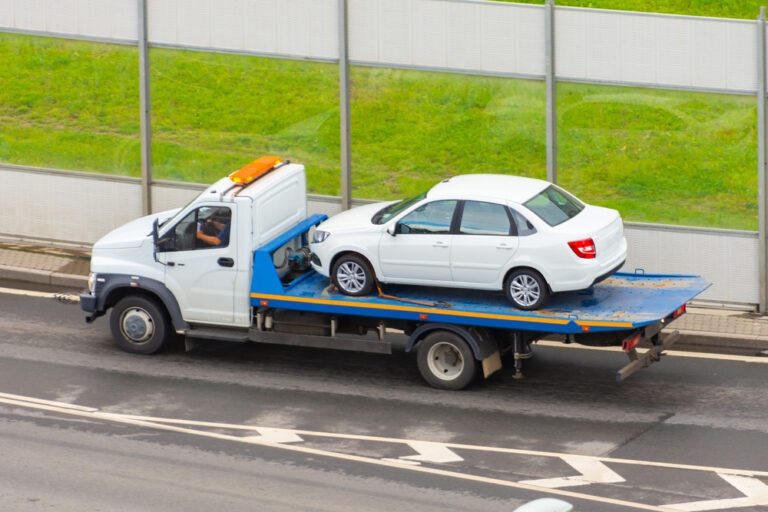
5 Tips for Hauling Oversized Loads
Thinking about hauling an oversized load?
Maybe you need to get your construction equipment to your build site. Maybe you just purchased a big boat for the upcoming summer and need to find a way to transport it to your house. Or, perhaps you’re a company that wants to start transporting oversized loads. Whatever you’re hauling, there are several safety issues to consider.
Why? Because taking safety precautions ensures that you’re mitigating the risk of injury for everyone on the road. In 2019, 4,119 people died from truck crashes, which amounts to about 11.41% of all road deaths. When you consider that semi-trucks account for only 1% of all registered vehicles in the US, this is a truly significant number.
Though you could deal with all the logistics of transporting oversized loads yourself (including acquiring the truck and equipment, vetting and hiring a driver, planning the route and alternate routes, and much more), an easier and safer option is available.
Use a vehicle transportation company like ShipLux. Our customer-oriented team is expert at hauling oversized loads and ensuring that no hiccups occur along the way.
Regardless of whether you decide to use ShipLux, be aware of the following safety precautions.
Oversized Load Definition
If you’re shipping a large load, the first thing you need to know is whether your shipment qualifies as oversized. If your load doesn’t meet the oversized load definition, but you still prepare for transportation as if it is oversized, you will be paying an unnecessarily large sum for unnecessary extra service.
Though you must check the rules on oversized loads for each state along your cargo’s journey, the most essential step is to ensure your load follows federally mandated guidelines.
Oversized loads are defined as those which exceed the standard size for trucks operating on highways. This is either because of the load’s weight, the truck’s width, or the cargo’s height.
Federal guidelines define oversized loads as those which meet one or more of the following criteria:
- Gross vehicle weight of more than 80,000 pounds
- A single-axle weight of more than 20,000 pounds
- A tandem-axle weight of more than 34,000 pounds
- Width of more than 102 inches
Now that you know whether your load is defined as oversized, you need to learn about the dangers and safety tips for mitigating them.
Plan, plan, plan. Then plan some more.
Before you get on the road, you should have a complete plan in place. A well-thought-out plan decreases the likelihood of surprise difficulties along the way.
First, you should evaluate multiple route options by considering their benefits and risks. You must consider travel durations, fueling and lodging locations, the fuel needed, and the occurrence of steep or otherwise troublesome terrain.
Though one route may be the faster option, it may expose your truck and cargo to volatile weather or terrain conditions. Or, the quicker route does not offer enough viable refueling points.
Once you decide on a route, you should establish contingency plans. Unexpected severe weather can and does happen, and your driver needs to have backup plans for such scenarios.
For example, say you’re hauling an oversized load from Albuquerque to Omaha and plan to travel through Colorado. If snow starts to fall in Northern Colorado, your driver should be able to look at the plan and see that he should take a detour through Oklahoma and Kansas to avoid it.
This probably seems like a lot of planning. That’s because it is a lot of planning. Though you could purchase software to analyze these factors and determine the best routes for you, the easiest and least risky option is to use ShipLux.
We pair our logistics experts with the latest software to design the most thorough and well-rounded route plans possible.
Ensure your truck is inspected and serviced.
There’s nothing worse than dealing with unexpected breakdowns or malfunctions while your oversized cargo is in transit. That’s why you must diligently inspect and service your truck before it hits the road. Though you can and should inspect the truck yourself, you should also take it in for professional service.
When inspecting the truck yourself, pay attention to tire pressure, damages to the vehicle or cargo-securing equipment, break functionality, engine temperature, and the gas meter. You should also make sure you don’t forget to include spare parts and extra gear in the truck.
If there are any issues you can’t deal with yourself, be sure to address them when you take the truck in for service.
The service professionals will double-check your oil, tires, fluid, brakes, and more to ensure your truck is road-ready.
Secure the oversized load properly.
It’s crucial to secure your oversized load properly. Especially since unsecured cargo accounts for about 4% of all fatal trucking accidents. You don’t want to be liable for fatalities or other road-side injuries caused by your truck.
There are many fastening devices and equipment to choose from, and they are all used for hauling different loads for different purposes. Using an incorrect device could result in dislodged cargo, often leading to collisions.
Even if you choose the right equipment, you are still at risk if you haven’t inspected the equipment for damages. You should always check your equipment before and after every haul. Any damaged or failing equipment should be replaced immediately.
Hire the right driver.
If you’re considering a one-off haul and are not planning on being behind the wheel, you must hire a responsible driver with a good track record. An experienced driver will be well trained to follow the rules and regulations, secure cargo, and select the best detours.
Likewise, if you’re planning to operate a fleet of trucks, you should take the time to hire the best drivers:
- Weed out the bad apples with an in-depth background check.
- Select the drivers who seem most responsible and experienced.
- You should provide further training to ensure your drivers follow the latest best practices for hauling oversized loads.
Many may not have experience with oversized loads, so further training may be crucial.
Depending on which states you’re hauling through, you may also need to hire travel escorts, also called pilot cars. These cars with flashing lights that alert drivers to the dangers involved with the oversized load ahead. Depending on the size of your shipment, some states require two pilot cars.
Though different states follow different rules, generally, trucks will need at least one pilot car when their load exceeds 12 feet in width, 14.5 feet in height, and/or 90-100 feet in length.
Choose the right shipping company for your oversized load.
Let’s say you’ve evaluated your options and have decided to hire a transportation company specializing in oversized loads rather than figure out all the logistics yourself. Now you need to select the right company.
Not all oversized load transportation companies are created equal. Therefore, when contacting a transportation company, you should ask questions to confirm that they are the right choice for the job.
- Do they use the proper oversized load permits?
- Do they have commercial truck insurance?
- Do they hire experienced drivers and provide further training?
- Do they have a good track record regarding the estimated transportation timeline and damaged cargo?
If a transportation company cannot provide answers to one or more of these questions, you should hang up and contact a better company, like ShipLux.
At ShipLux, we take pride in providing the best transportation service from first contact to delivery, regardless of what you’re shipping or whether it’s oversized. We hire only experienced staff and put our team of contract drivers through intensive training to ensure any hiccups that might occur along the way are dealt with smoothly.
If you’re looking for an easy and service-oriented option for oversized load shipping, there’s no better option than ShipLux.
Wondering how much hauling your oversized load might cost? Fill out this form for a free quote.
Or, call us at (855) 999-7330 to start shipping your oversized load today.
Recent post

General Shipping Information
Debunking Common Vehicle Transport ...

Car Shipping